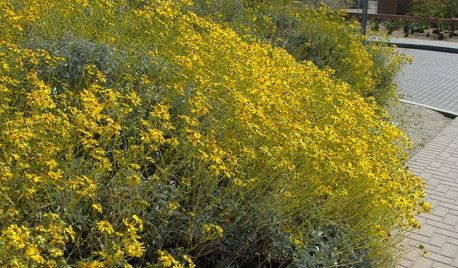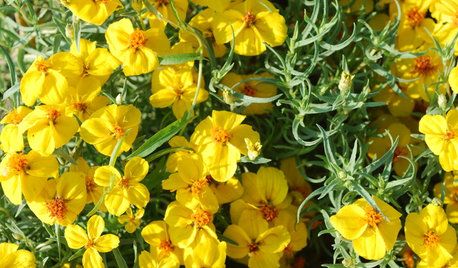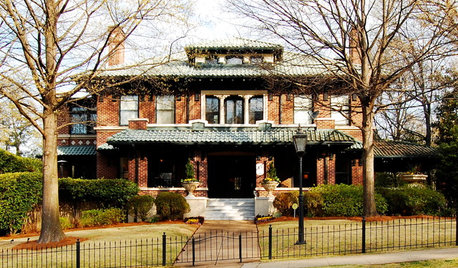Hydrangea leaves are getting yellow with rust spots
vika
14 years ago
Related Stories

GARDENING GUIDESHow to Fix Bare and Yellow Lawn Spots
Restore your turf’s good looks by reseeding unsightly patches
Full Story
FALL GARDENING5 Ways to Put Fall Leaves to Work in Your Garden
Improve your soil and yard the organic way with a valuable garden booster that grows on trees
Full Story
GARDENING GUIDESWhat's Wrong With My Plant? Leaves Often Hold the Clues
Learn how to identify common plant ailments by reading their leaves
Full Story
GARDENING GUIDESGreat Design Plant: Brittlebush Brightens Rocky, Dry Spots
Masses of cheerful golden flowers belie the tough nature of this highly drought-tolerant shrub
Full Story
GARDENING GUIDESGreat Design Plant: Rocky Mountain Zinnia Brightens Hot, Dry Spots
Sunshiny flowers provide a showy drift of color in desert and prairie gardens — this native perennial is hardier than it looks
Full Story
HOUSEKEEPINGOut, Darn Spot! Tips for Removing Carpet Stains
Know the right solutions and when to use them to prevent stains from pets, soda, chocolate, blood and more
Full Story
REMODELING GUIDESInterior Brick: Paint it or Leave It?
Here's how to know if covering that brick is a sin or solution
Full Story
LAUNDRY ROOMSRoom of the Day: The Laundry Room No One Wants to Leave
The Hardworking Home: Ocean views, vaulted ceilings and extensive counter and storage space make this hub a joy to work in
Full Story
ARCHITECTUREStates of Style: Alabama’s Icons Leave Their Mark
In the first of a new series, discover the natural beauty, the architectural icons and some of our favorite homes deep in the heart of Dixie
Full Story
LANDSCAPE DESIGNPretty Trees for Patios, Paths and Other Tight Spots
Choose trees for their size, shape and rate of growth — or shape them to fit your space. Here's how to get started
Full StoryMore Discussions







vikaOriginal Author
IanW Zone 5 Ont. Can.
Related Professionals
Richmond Heights Landscape Architects & Landscape Designers · Brookside Landscape Contractors · Cicero Landscape Contractors · Davidson Landscape Contractors · Forest Hills Landscape Contractors · Golden Landscape Contractors · Matteson Landscape Contractors · Morrisville Landscape Contractors · Pleasant Grove Landscape Contractors · Smyrna Landscape Contractors · Forest Hill Landscape Contractors · Casselberry Landscape Contractors · Amesbury Siding & Exteriors · Malden Siding & Exteriors · Point Loma San Diego Siding & ExteriorsvikaOriginal Author
IanW Zone 5 Ont. Can.
laura55
norma_2009
laura55
gardengal48 (PNW Z8/9)
laura55